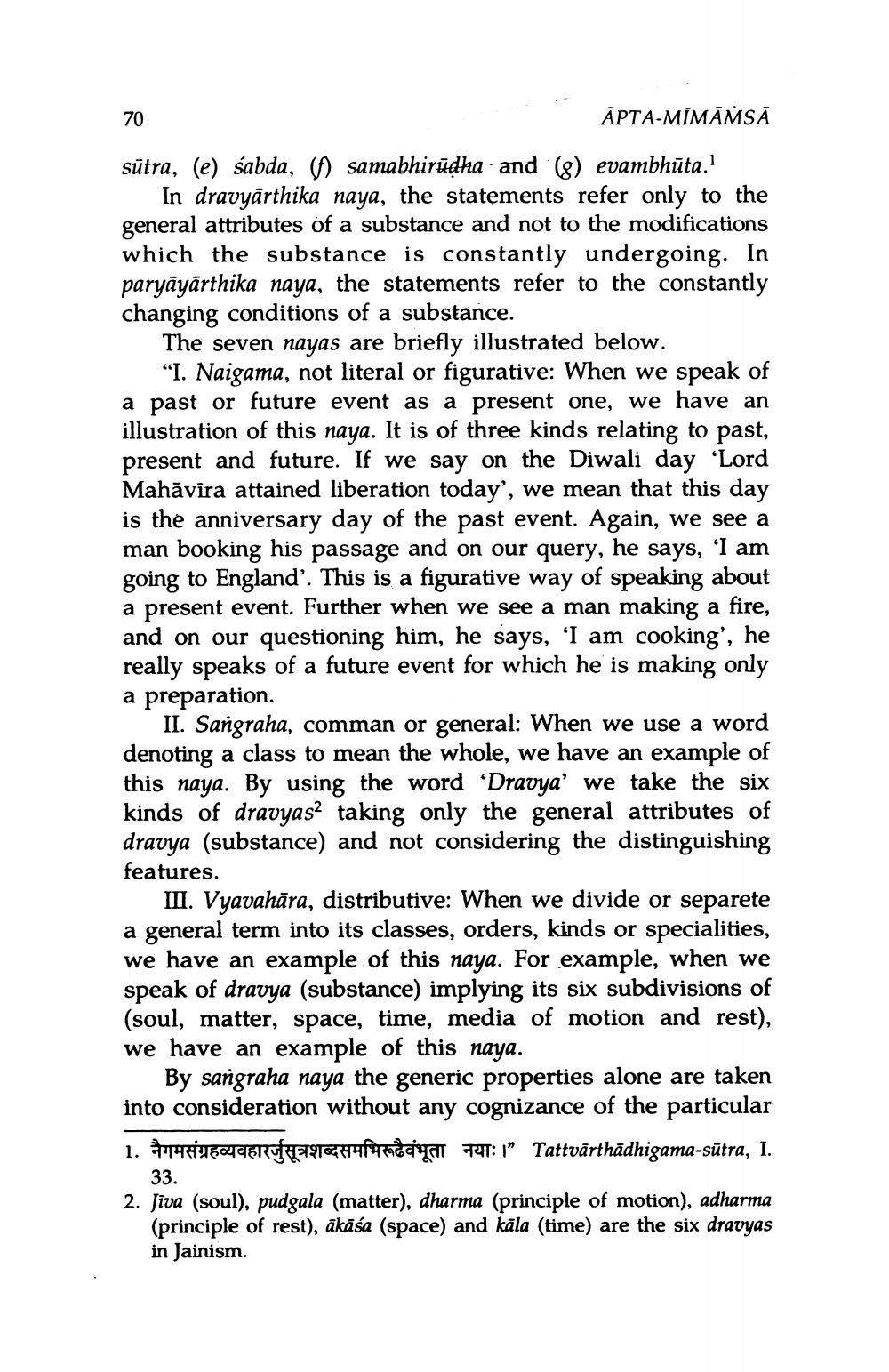________________
ĀPTA-MĪMĀSĀ
sūtra, (e) sabda, samabhirudha - and (8) evambhūta.
In dravyārthika naya, the statements refer only to the general attributes of a substance and not to the modifications which the substance is constantly undergoing. In paryāyārthika naya, the statements refer to the constantly changing conditions of a substance.
The seven nayas are briefly illustrated below.
“I. Naigama, not literal or figurative: When we speak of a past or future event as a present one, we have an illustration of this naya. It is of three kinds relating to past, present and future. If we say on the Diwali day ‘Lord Mahāvira attained liberation today', we mean that this day is the anniversary day of the past event. Again, we see a man booking his passage and on our query, he says, 'I am going to England'. This is a figurative way of speaking about a present event. Further when we see a man making a fire, and on our questioning him, he says, 'I am cooking', he really speaks of a future event for which he is making only a preparation.
II. Sangraha, comman or general: When we use a word denoting a class to mean the whole, we have an example of this naya. By using the word “Dravya' we take the six kinds of dravyasz taking only the general attributes of dravya (substance) and not considering the distinguishing features.
III. Vyavahāra, distributive: When we divide or separete a general term into its classes, orders, kinds or specialities, we have an example of this naya. For example, when we speak of dravya (substance) implying its six subdivisions of (soul, matter, space, time, media of motion and rest), we have an example of this naya.
By sangraha naya the generic properties alone are taken into consideration without any cognizance of the particular 1. TRY6Q106R ETTH4fddina FeT: 1" Tattvārthādhigama-sūtra, I.
33. 2. Jiva (soul), pudgala (matter), dharma (principle of motion), adharma
(principle of rest), ākāśa (space) and kāla (time) are the six dravyas in Jainism.




